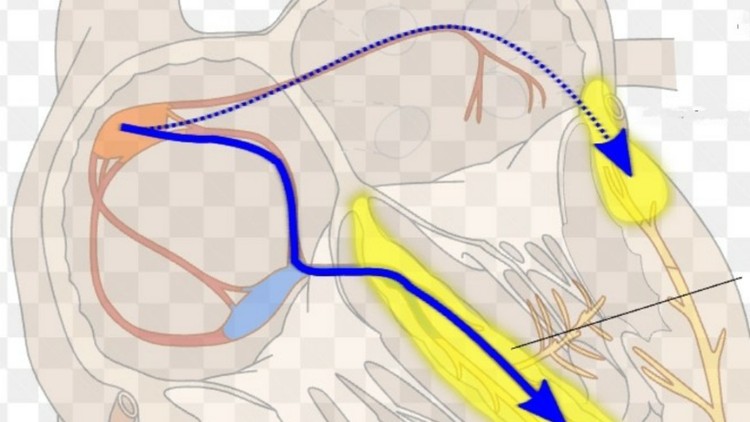
Etiology , Causes, Clinical Features, Pathophysiology Complications with Management of Wolf Parkinsons White Syndrome
What you will learn
What is Wolf Parkinsons White Syndrome WPW
What are clinical Features of WPW Syndrome
What are ECG Findings of WPW Syndrome
Complications and Management of WPW Syndrome
Why take this course?
🫡 Understanding Wolff-Parkinson-White Syndrome (WPW): A Deep Dive into Etiology, Clinical Features, and Management
Are you ready to explore one of the most fascinating topics in cardiology? Join us on an educational journey through the world of Wolff-Parkinson-White Syndrome (WPW)! In this comprehensive course, we will delve into the etiology, causes, clinical features, pathophysiology, complications, and management strategies for WPW. Our interprofessional healthcare team will guide you through the complexities of this condition, ensuring you have a solid grasp of both the science and clinical applications involved.
Course Overview:
🔬 Objectives:
- ✅ Identify the etiology of Wolff Parkinson White syndrome.
- ✅ Outline the evaluation of WPW syndrome.
- ✅ Review the management options available for patients with this condition.
- ✅ Describe interprofessional team strategies that can enhance care coordination and improve patient outcomes.
What is Wolff-Parkinson-White Syndrome?
Wolff-Parkinson-White (WPW) syndrome is a type of heart rhythm disorder (arrhythmia) caused by an extra electrical pathway between the upper and lower chambers of the heart. This abnormal conduction system can lead to rapid heartbeats, which sometimes cause symptoms like palpitations, dizziness, or fainting. The hallmark of WPW on an electrocardiogram (ECG) is a short PR interval, a long QRS complex with an initial slurred upward deflection (the delta wave), and preexcitation of the ventricles.
The Heart’s Normal Conduction System:
The heart’s electrical system is designed with two electrical units — the atria (upper chambers) and the ventricles (lower chambers) — separated by a specialized tissue called the atrioventricular (AV) node. This system ensures that electrical signals are conducted from the atria to the ventricles in an orderly fashion, allowing for efficient blood pumping throughout the body.
The Accessory Pathway:
In WPW syndrome, an additional electrical pathway, known as an accessory pathway, forms a “shortcut” around the AV node. This can lead to abnormal heart rhythms, which may be benign or, in rare cases, life-threatening. The presence of this bypass tract means that electrical signals can travel too quickly from the atria to the ventricles, causing the characteristic symptoms and ECG findings associated with WPW.
Etiology of WPW:
The origin of WPW is thought to stem from an error in cardiac embryogenesis, where chamber myocardium forms electrically conductive bundles that should not be there. These accessory pathways can have varying conductive properties and are often non-decremental or non-delayed. The characteristics of each pathway will influence its role in the initiation or transmission of arrhythmias.
Clinical Features and Complications:
Patients with WPW may present with a variety of symptoms, ranging from none at all to life-threatening arrhythmias like atrial fibrillation or supraventricular tachycardia (SVT). Understanding the clinical features is crucial for timely diagnosis and management.
Management of WPW:
The management of WPW syndrome involves a multidisciplinary approach, including medical therapy, catheter ablation, and, in rare cases, surgical intervention. The choice of treatment depends on several factors, including symptom severity, the nature of the accessory pathway, and patient comorbidities.
Join course instructor Saad Gillani as he expertly guides you through this intricate condition. Whether you’re a medical professional looking to enhance your knowledge or a student eager to learn, this course will provide you with the insights and skills needed to navigate WPW syndrome confidently. 🩺✨